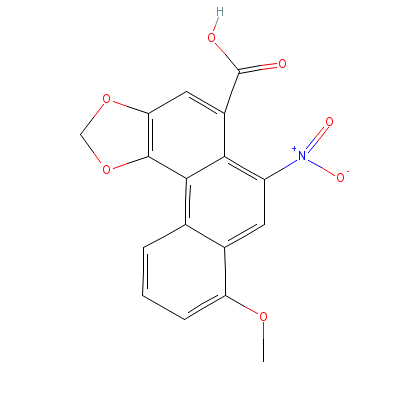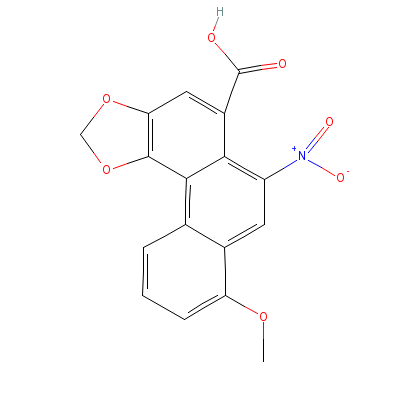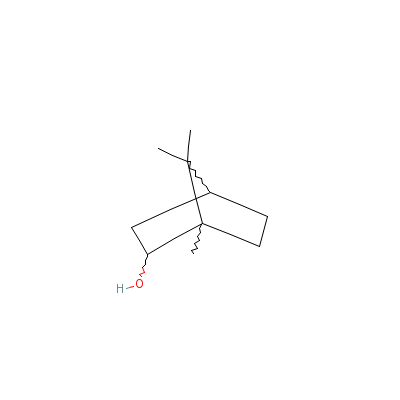Aristolochia serpentaria L. |
| |
|
|
Botanical Name |
: |
Aristolochia serpentaria L. |
English
Name |
: |
Virginia snakeroot |
Synonym(s) |
: |
Aristolochia convolvulacea Small, Aristolochia hastata Nuttall, Aristolochia nashii Kearney, Aristolochia serpentaria var. hastata (Nuttall) Duchartre |
Family |
: |
Aristolochiaceae |
| |
General Info
| Description |
 |
|
An erect to decumbent herb, growing up to 0.6 m. Young stem ridged, glabrous to hispid. Leaves: petiole 0.5-3.5 cm; leaf blade lanceolate to ovate, 5-15 × 1-5 cm, base truncate to cordate, sinus depth 0-1.5 cm, apex acute to acuminate; surfaces abaxially glabrous or hispid; venation pinnate. Inflorescences from base of stem, an additional flower in axil of stem leaf, racemes; peduncle bracteolate, to 1.5 cm; bracteoles lanceolate, to 3 mm. Flowers: calyx brown-purple, bent; utricle pendent, pear-shaped to ovoid, 0.5-5 cm; syrinx present, ringlike, 1 mm, oblique; tube bent, cylindric, 1 cm; annulus smooth; limb purplish brown, 3-lobed, lobes 0.5 × 0.5 cm, glabrous; gynostemium 3-lobed, globose to crown-shaped, 1.5 mm; anthers 6; ovary 3-locular, to 1.5 cm. Capsule globose, 0.8-2 × 1-2 cm, dehiscence basipetal; valves 6; septa absent. Seeds rounded, ovate, 0.5 × 0.4 cm. |
| Herb Effects |
 |
|
Antidote, analgesic, anti-inflammatory, bitter tonic, diaphoretic, diuretic and stimulant (root). |
Chemistry
| Active Ingredients |
 |
|
Aristolochic acid, aristolochine and borneol (plant). |
| Chemistry
of Active Ingredients |
 |
|
|
 |
Name |
CAS# |
IUPAC Name |
Formula |
Structure |
 |
|
| Aristolochic acid |
61117-05-3 |
Not Available |
C17H11NO7 |

|
| Aristolochine |
61117-05-3 |
Not Available |
C17H11NO7 |

|
| Borneol |
10385-78-1 |
1,7,7-trimethylnorbo
rnan-2-ol |
C10H18O |

|
|
Pharmacology
| Medicinal Use |
 |
|
The plant is used in a number of proprietary medicines for treating skin, circulatory and kidney disorders, rheumatism, various pains, obstructions, worms, toothaches, sore throats, fever, sore noses, and colds. The roots are chewed in minute doses or used as a weak tea to promote sweating, stimulate the appetite and promote expectoration. An infusion of roots are used internally to treat rheumatism, pain - but especially sharp pains in the breast, and as a wash for headaches. The bruised root is placed in hollow teeth for treating toothache. An extract of the root can be drunk to relieve stomach pains. The boiled root, or a decoction of the whole plant, can be used to treat fevers. The chewed root or crushed leaves was applied to snakebites. It has also been applied externally to slow-healing wounds and in the treatment of pleurisy. |
Dealers
Products
|
|